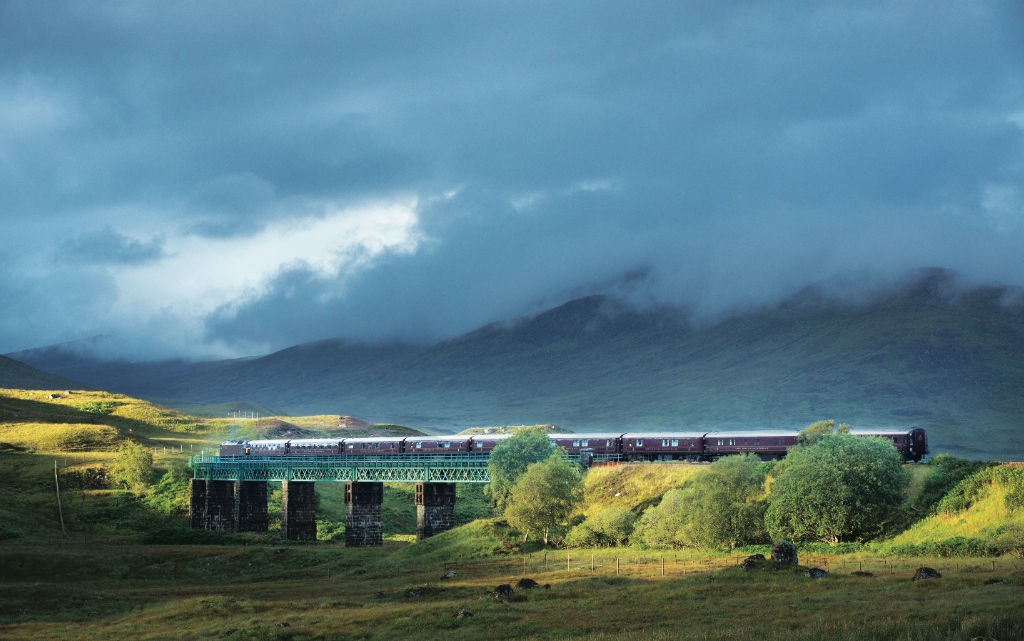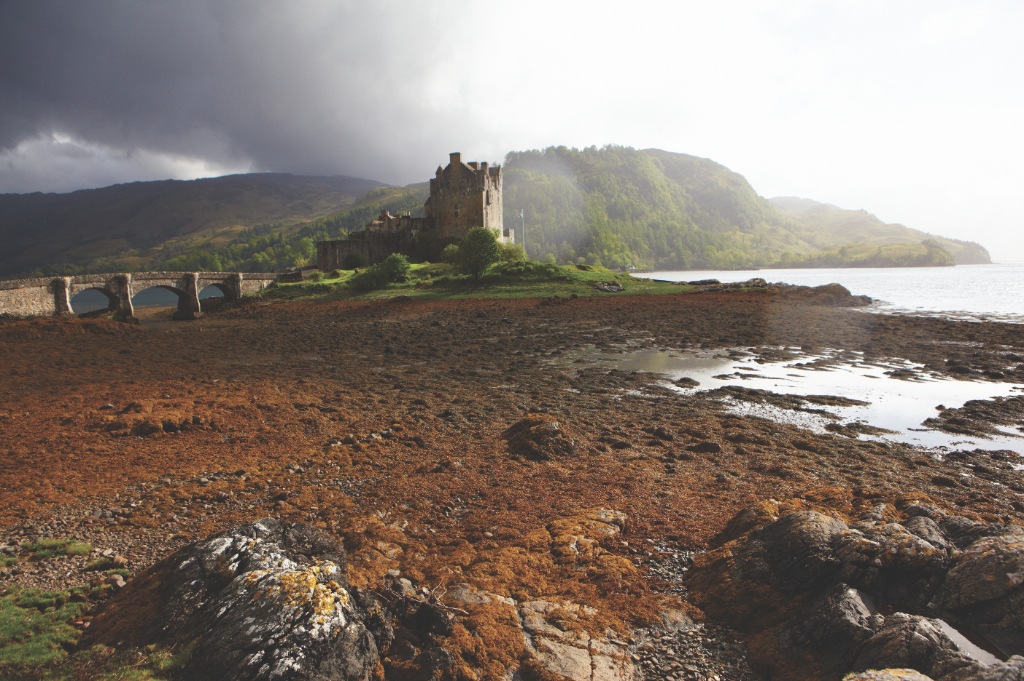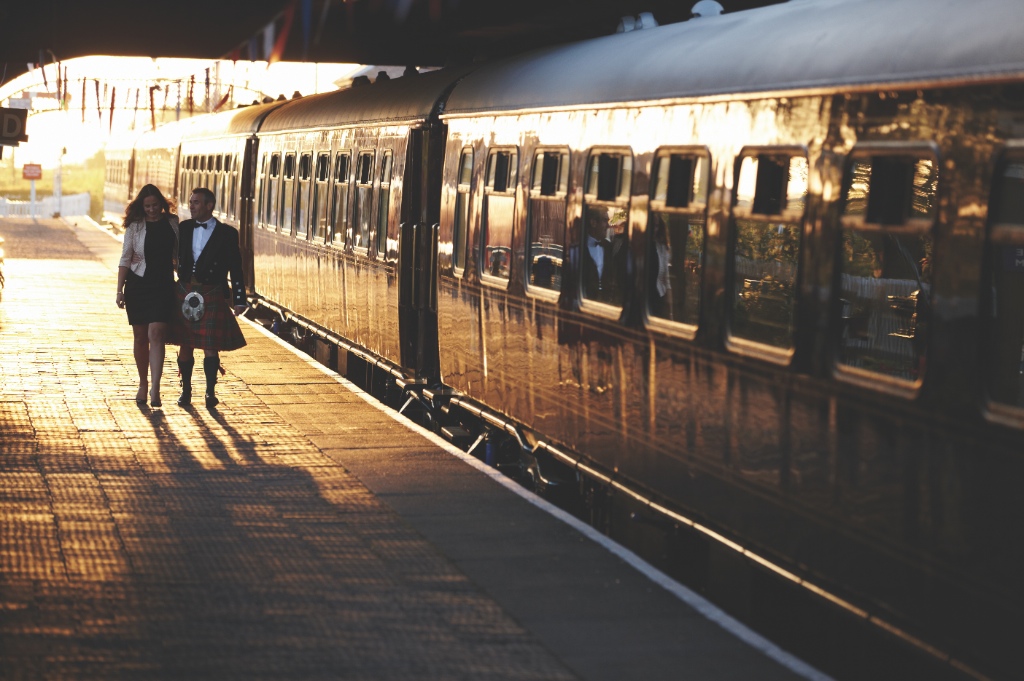All aboard the Royal Scotsman: An epic four day train journey through the Scottish Highlands

An oil baron from Tulsa, Oklahoma, where typical party wear is a stetson and cowboy boots, stands on the platform at Dundee dressed like Bonnie Prince Charlie. “I can feel my inner Braveheart surfacing,” he says, adjusting his sporran and sliding a kirk into his tartan socks.
He hasn’t an ounce of Scottish blood in him of course, but then neither do any his fellow countrymen, who’ve come from every corner of the US for a four day rail journey around the Scottish highlands. It’s midnight on the final day of our trip, and as an accordionist plays The Blue Bells of Scotland we embrace tradition, dancing The Gay Gordons and other merry reels.
This surreal Caledonian version of Strictly is the climax to our time aboard The Belmond Royal Scotsman, a train belonging to a more elegant era of travel, with claret and gold carriages sumptuously modelled on an Edwardian gentleman’s club. The decoration is all burnished mahogany panelling, wall candle lights and prints of antlered stags at bay, but updated with private bathrooms and other modern conveniences.
The Belmond Royal Scotsman carries just 34 pampered passengers in nine beautifully restored, vintage Pullman carriages, the kind you’d expect to find on the Orient Express. Indeed, it all resembles the set of an Agatha Christie film with a multi-national cast, a kind of travelling house party that seems to have stepped out of the real world and into the last century.
We arrived at Edinburgh’s Waverley station to be greeted by Pipe Major Iain Grant in full fig, wearing a feathered bonnet and kilt and playing Amazing Grace. He led us pied-piper-like down the platform to a red carpet where smiling train staff offered us champagne as we boarded. A promising start to our Highland adventure. The skirl of bagpipes had hardly faded by the time we rumbled over the Forth Bridge, its fat girders spanning the cold waters of the firth like a rust-red crown. Chugging gently along the coast to Aberdeen we spied abandoned off-shore rigs rocking on the tide, each left to rot after a fall in oil production rendered them useless. We stabled for the night on a quiet stretch of track at the wool town of Keith.
This is where on-board whisky ambassador Les Harrow serves vintage malts, and informs passengers that they are about to enter the Whisky Triangle, a region of 114 distilleries such as Chivas Regal and Glenlivet generating £5bn for the exchequer every year. He raised a glass of smoky Bruichladdich and bid us “sláinte”, the Gaelic for word for cheers.
 (Source: Belmond)
(Source: Belmond)
Next morning the train glided through Inverness and skirted Culloden, the desolate bog where in 1746 the Highlanders’ dream of taking the English throne ended in bloody defeat. We continued on our way to Cawdor Castle, home to Shakespeare’s Macbeth and dotted with pepperpot turrets and crenellated parapets. Lady Angelika Campbell greeted me at the castle drawbridge. A fabled beauty, she’s friend to the Duke and Duchess of Windsor and, before her marriage, was a Prague Countess. “Princess Michael of Kent was a guest here last week,” my guide informed. “She’s Teutonic. The two of them spent all week speaking to each other in Czech. It’s the only chance they get to talk in their native languages.”
The brooding Torridon Mountains, their black peaks ringed with lacy collars of snow, unravelled before us as we circled around the icy Loch Luichart. And having traced a path through dense pine forests and moors empty but for a few wild deer, we made our way to Kyle of Lochalsh, the gateway to the Isle of Skye. This rolling panorama of postcard Scotland is best viewed from the Royal Scotsman’s observation car. Once the kitchen car, it now hosts an elegant green velvet drawing room that opens out on to the train’s veranda, where the salty air of passing lochs is intoxicating.
Daytime aboard the train is informal, but two black-tie dinners provide an opportunity for passengers to parade in their kilts. The Americans bickered over the authenticity of their tartans until we were eventually joined by the Hollywood actress Carrie Fisher, who broke all convention by bringing her French bulldog, Gary. The dog, who the kitchen had been instructed to feed only hamburgers and bacon, was dressed in his own little tartan dog jacket and had his own seat at the table.
 (Source: Belmond)
(Source: Belmond)
When he’s not cooking for Princess Leia’s pooch, the Royal Scotsman’s chef James Souter creates his own taste of Highland heaven. Although quite how he cooks such delicious dishes – salmon from the Tay, lobster from Loch Fyne, timbale of berries in champagne jelly from Fife – from inside a swaying, coffin-sized room, is a culinary mystery.
Some time after dinner, and with the tartan one-upmanship continuing over a whisky or two, our train made its way across the River Tay, approaching the final leg of its journey. In the distance Glamis Castle loomed out of the mist like a big sasquatch made of bricks. The childhood home of the Queen Mother, Glamis Castle is now said to be rather gloomy on the inside, as the miserly Earl of Strathmore insists on using the smallest light bulbs to save electricity.
There’s nothing so parsimonious about the rugged and pristine highland estate of Rothiemurchus however, where elite commandos once trained during World War II. While others blasted away at clay pigeons, fished or played golf, I instead spent my time hand feeding a baby deer.
Back on an otherwise deserted train platform in Dundee, our four day journey through the Highlands ends on a faintly surreal note, as a spirited clan of kilt-wearing oil barons dance and sing with a Jedi princess and her burger-loving dog. It’s as bizarre an enactment of Celtic tradition as it gets, but while the guests at this send off were far from Scottish, our journey aboard Belmond Royal Scotsman offered up a new perspective of this country’s immense and sprawling beauty.
A trip through the very heart of the Highlands, this is a train ride you won’t forget.
For more information on Belmond Royal Scotsman visit belmond.com
For more information on Scotland visit visitscotland.com